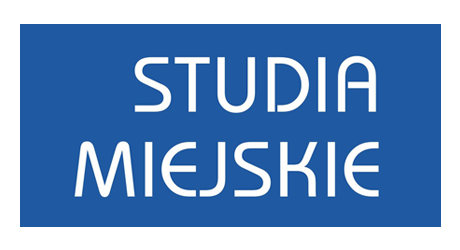Biskupski Ł., 2008, Graffiti i street art: na pograniczu sztuki publicznej i ruchu alternatywnego, „Przegląd Kulturoznawczy” nr 4.
Błaszczyk M., Pluta J., 2015, Uczestnicy, konsumenci i mieszkańcy, Scholar, Warszawa.
Citizen politics in post-industrial societies, 1997, eds. T.N. Clark, M. Rempel, Westview Press, Boulder.
Clark T.N., 2003a, Introduction, [w:] The city as an entertainment machine, ed. T.N. Clark, Elsevier, Oxford.
Research in Urban Policy vol. 9.
Clark T.N., 2003b, A political theory of consumption, [w:] The city as an entertainment machine, ed. T.N. Clark, Elsevier, Oxford. Research in Urban Policy vol. 9.
Clark T.N., 2007, Making culture into magic: How can it bring tourists and residents?, “International Review of Public Administration” vol. 12, No. 1.
Clark T.N., Fergusson L., 1983, City money, political processes, fiscal strain, and retrenchment, Columbia University Press, New York.
Clark T.N. et al., 2014, Can Tocqueville karaoke? Global contrasts of citizen participation, the arts, and development, Emerald Group Publishing, Bingley.
Clark T.N., Lipset S.M., 1991, Are social class dying?, “International Sociology” 6 (December).
Clark T.N., Lloyd R., Wong K.K., Jain P., 2002, Amenities drive urban growth, “Journal of Urban Affairs” vol. 25, No. 5.
Clark T.N., Lloyd R., Wong K.K., Jain P., 2003, Amenities drive urban growth: A new paradigm and policy linkages, [w:] The city as an entertainment machine, ed. T.N. Clark, Elsevier, Oxford. Research in Urban Policy vol. 9.
Domański H., 1999, Czy w Polsce zanikają klasy? Postawy wyborcze a miejsce w strukturze społecznej w latach 1991–1997, „Studia Socjologiczne” nr 3(154).
Domański H., 2004, Struktura społeczna, Scholar, Warszawa.
Domański H., 2015, Czy są w Polsce klasy społeczne?, Wydawnictwo Krytyki Politycznej, Warszawa.
Drozdowski R., Frąckowiak M., 2013, Bilans społecznej wyobraźni: komentarz socjologiczny do poznańskiego budżetu obywatelskiego, „Ruch Prawniczy, Ekonomiczny i Socjologiczny” R. 75, z. 4.
Ehrlich S., 1962, „Grupy nacisku” w społecznej strukturze kapitalizmu, Państwowe Wydawnictwo Naukowe, Warszawa.
Florida R., 2010, Narodziny klasy kreatywnej, Narodowe Centrum Kultury, Warszawa.
Florida R., Gates G., 2003, Technology and tolerance, [w:] The city as an entertainment machine, ed. T.N. Clark, Elsevier, Oxford. Research in Urban Policy vol. 9.
Grotowska S., 2012, „Street art” i „guerrilla marketing” jako próby tworzenia przestrzeni publicznej, „ Studia Humanistyczne AGH” t. 11, z. 3.
Jałowiecki B., 2013, Polityka miejska a prawo do miasta, „Zoon Politikon” nr 4.
Lefebvre H., 2012, Prawo do miasta, „Praktyka Teoretyczna” nr 5.
Longman dictionary of modern English, 1989, Wydawnictwo Naukowe PWN, Warszawa.
Lösch A., 1961, Gospodarka przestrzenna: teoria lokalizacji, przeł. K. Dziewoński, W. Lissowski, Państwowe Wydawnictwo Ekonomiczne, Warszawa.
Michalski C., 1971, Wojna warszawsko-niemiecka, Czytelnik, Warszawa.
Musgrave R., 1990, The theory of public finance: A study in public economy, McGraw-Hill, New York.
Nathan R., Doolittle F., 1987, Reagan and the states, Princeton University Press, Princeton.
Niziołek K., 2008, Sztuka i aktywność obywatelska, [w:] Społeczeństwo obywatelskie. Między ideą a praktyką, red. A. Kościański, W. Misztal, Wydawnictwo Instytutu Filozofii i Socjologii PAN, Warszawa.
Nowak M., 2015, Środkowoeuropejski „ruch miejski” jako ruch społeczny środkowych segmentów struktury społecznej, [w:] O kulturze protestu jako rdzeniu tradycji europejskiej, red. P. Żuk, P. Żuk, Instytut Wydawniczy Książka i Prasa, Warszawa.
Peterson P., 1981, City limits, University of Chicago Press, Chicago.
Pluciński P., 2015, Pragmatyka miejskiego ruchu protestu, [w:] O kulturze protestu jako rdzeniu tradycji europejskiej, red. P. Żuk, P. Żuk, Instytut Wydawniczy Książka i Prasa, Warszawa.
Podgórniak-Krzykacz A., 2010, Władza lokalna w ujęciu koncepcji teoretycznych, [w:] 10-lecie funkcjonowania samorządu powiatowego (1999–2009). Doświadczenia i perspektywy, red. M. Klimek, J. Czerw, Lublin.
Schulze G., 1992, Erlebnisgesellschaft: Kultursoziologie der Gegenwart, Campus Verlag, Frankfurt–New York.
Silver D., Clark T.N., 2013, Buzz as an urban resource, “Canadian Journal of Sociology / Cahiers canadiens de sociologie” 38(1).
Silver D., Clark T.N., Navarro Janez C.J., 2010, Scenes: Social context in an age of contingency, “Social Forces” vol. 88, No. 5.
Sjoberg G., 1960, The preindustrial city: Past and present, The Free Press, Glencoe.
Szmalenberg D., 2013, Bariera pomagania: sztuka współczesna jako narzędzie pedagogizacji działań obywatelskich, „Societas/Communitas” nr 2.
Urban innovation. Creative strategies for turbulent times, 1994, ed. T.N. Clark, Sage, Thousand Oaks.
Wildavsky A., Thompson M., Ellis R., 1990, Cultural theory, Westview Press, Boulder.
Wymiary kulturowe polskich miast i miasteczek, 2015, red. M. Klekotko, C. Navarro, Wydawnictwo Uniwersytetu Jagiellońskiego, Kraków.
Google Scholar

